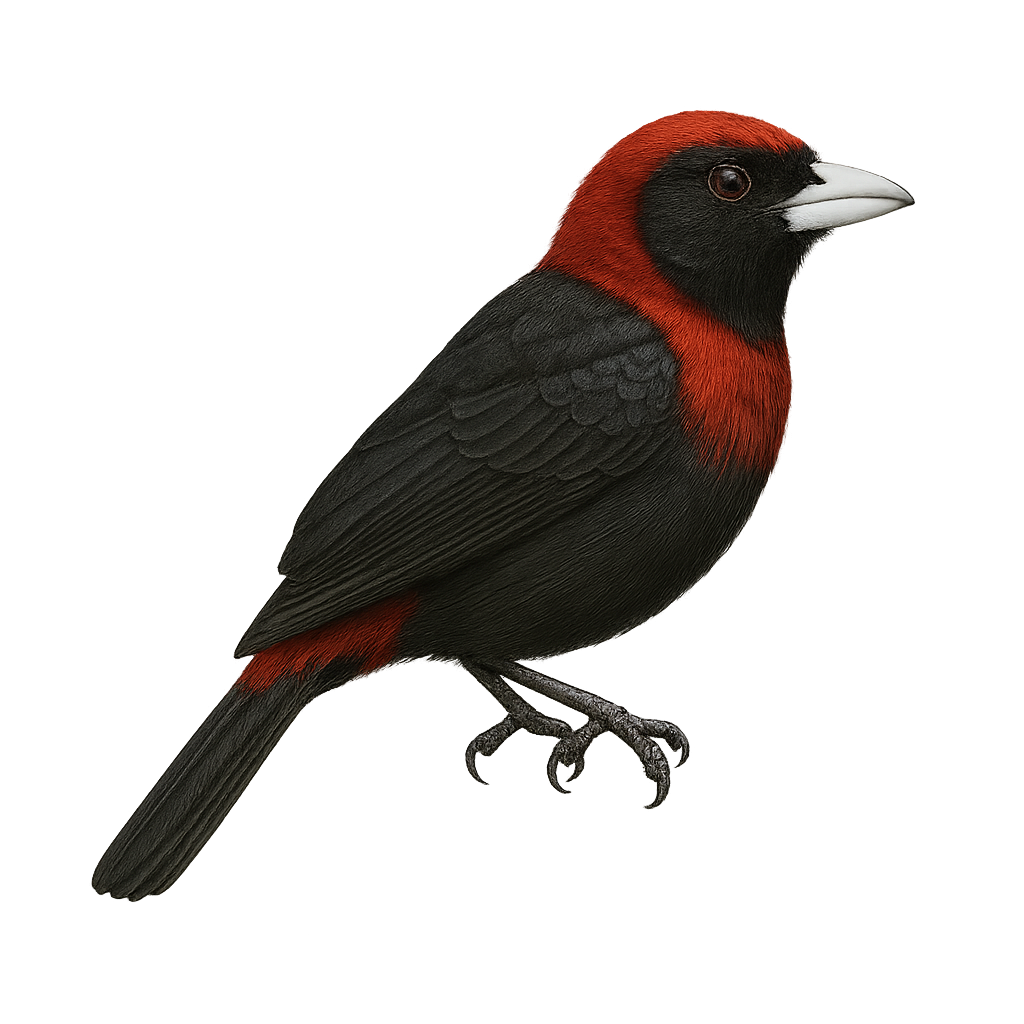Your wildlife photography guide.
Explore the crimson-collared tanager in detail, study its behavior, prepare your shots.
Where to observe and photograph the crimson-collared tanager in the wild
Learn where and when to spot the crimson-collared tanager in the wild, how to identify the species based on distinctive features, and what natural environments it inhabits. The WildlifePhotographer app offers tailored photography tips that reflect the crimson-collared tanager’s behavior, helping you capture better wildlife images. Explore the full species profile for key information including description, habitat, active periods, and approach techniques.
Crimson-collared Tanager
Scientific name: Ramphocelus sanguinolentus

IUCN Status: Least Concern
Family: THRAUPIDAE
Group: Birds
Sensitivity to human approach: Suspicious
Minimum approach distance: 10 m
Courtship display: April to May
Incubation: 13-15 jours
Hatchings: April to June
Habitat:
tropical rainforests, wooded areas, forest edges
Activity period :
Primarily active during the day, with peak activity in the morning and late afternoon.
Identification and description:
The Crimson-collared Tanager, scientifically known as Ramphocelus sanguinolentus, is a striking bird found primarily in Central America, particularly in Mexico, Honduras, and Costa Rica. This bird is noted for its vibrant plumage, featuring a bright red back contrasted with its black head and wings. Measuring about 19 cm in length, it is often spotted in tropical rainforests and wooded areas. Its diet mainly consists of fruits, berries, and insects. The Crimson-collared Tanager is a sociable bird, often seen in small groups or pairs. Although not considered threatened, deforestation poses a potential threat to its natural habitat.
Recommended lens:
400 mm – adjust based on distance, desired framing (portrait or habitat), and approach conditions.
Photography tips:
To photograph the Crimson-collared Tanager, it is advisable to use a telephoto lens of at least 400mm to capture the details of its vibrant plumage without disturbing it. Look for it in tropical rainforests where it often feeds on fruits. Be patient and discreet, as this bird can be suspicious. The best times to observe it are early in the morning or late in the afternoon, when natural light highlights its bright colors.
The WildlifePhotographer App is coming soon!
Be the first to explore the best nature spots, track rutting seasons, log your observations, and observe more wildlife.
Already 1 430 wildlife lovers subscribed worldwide

